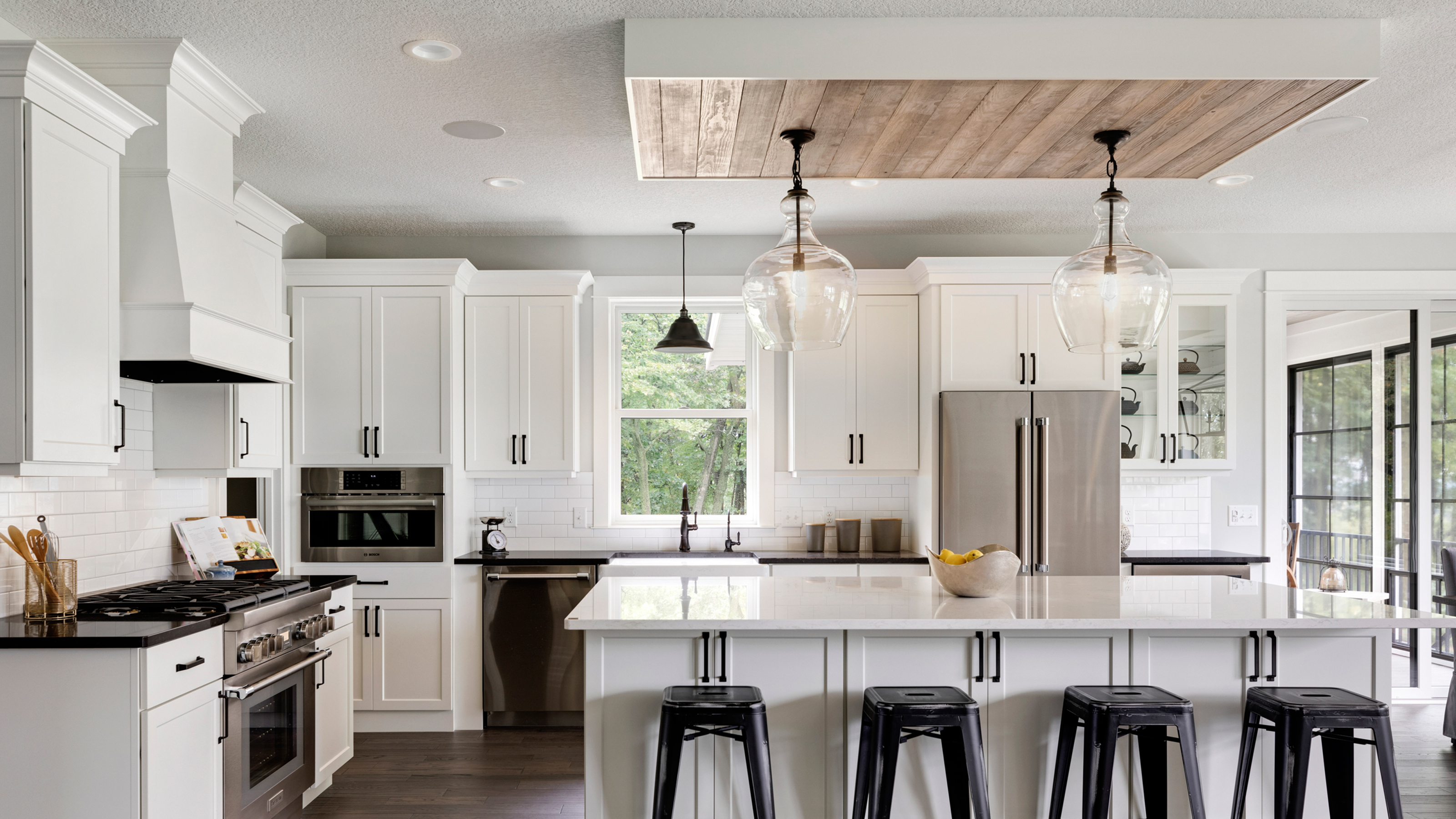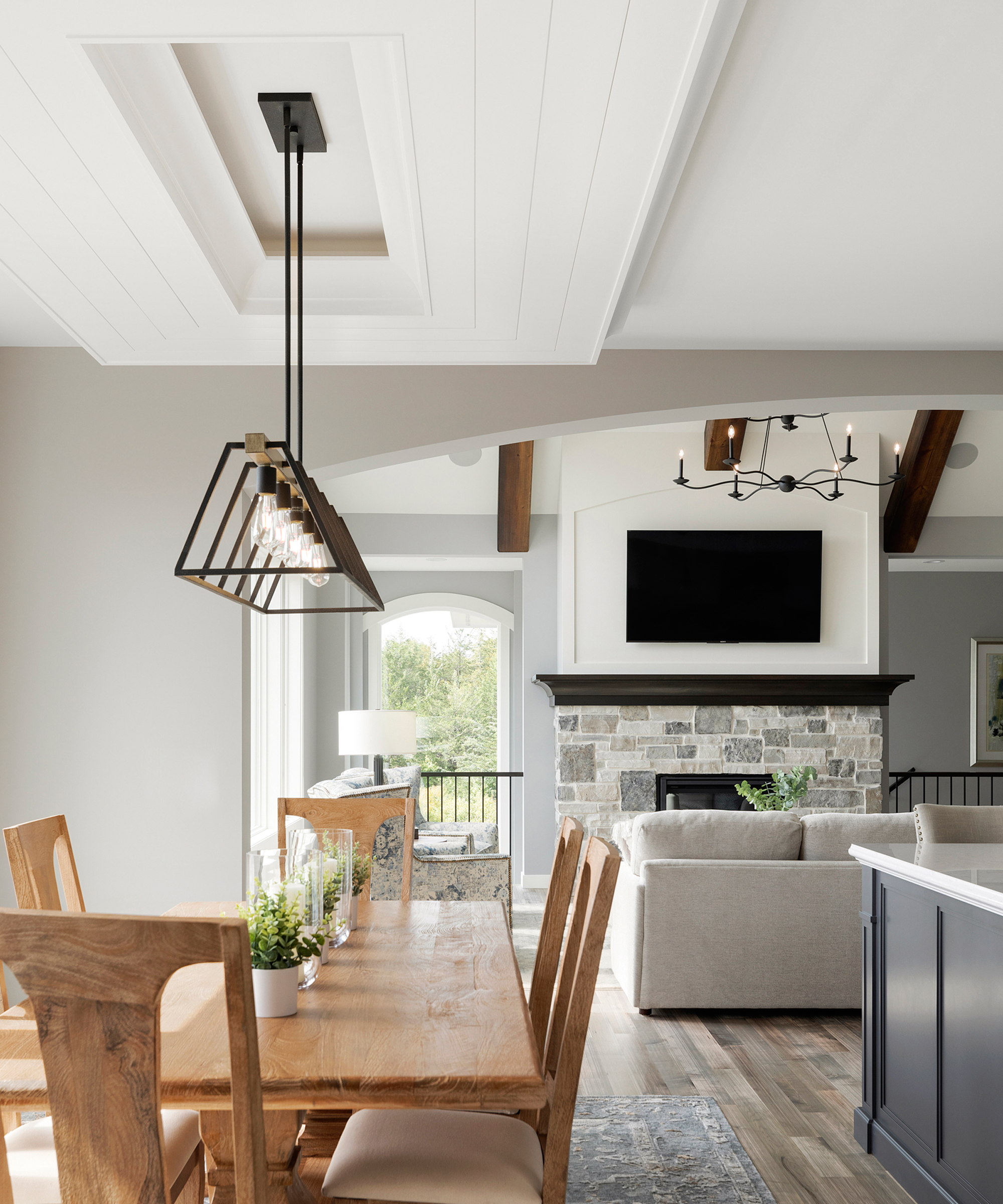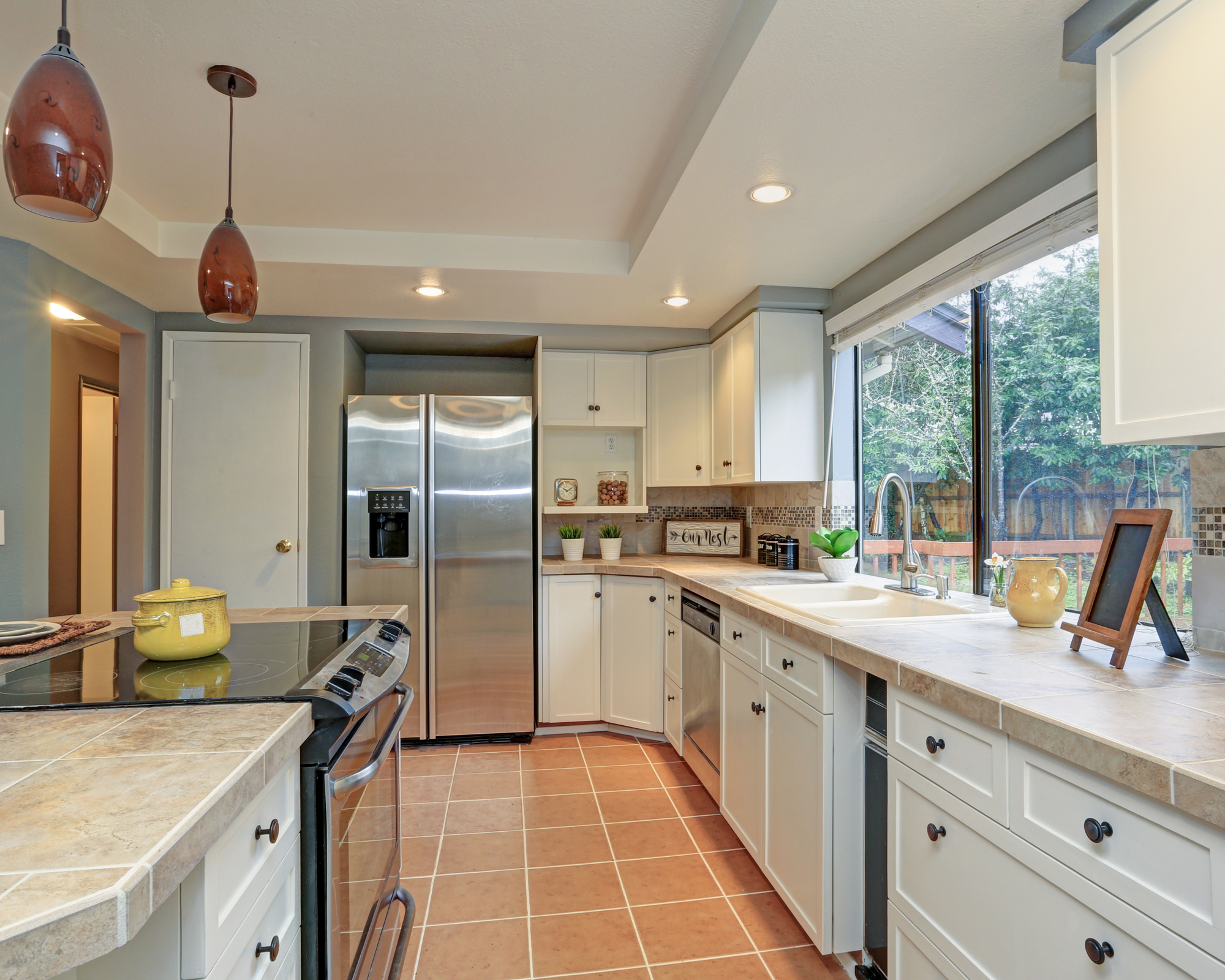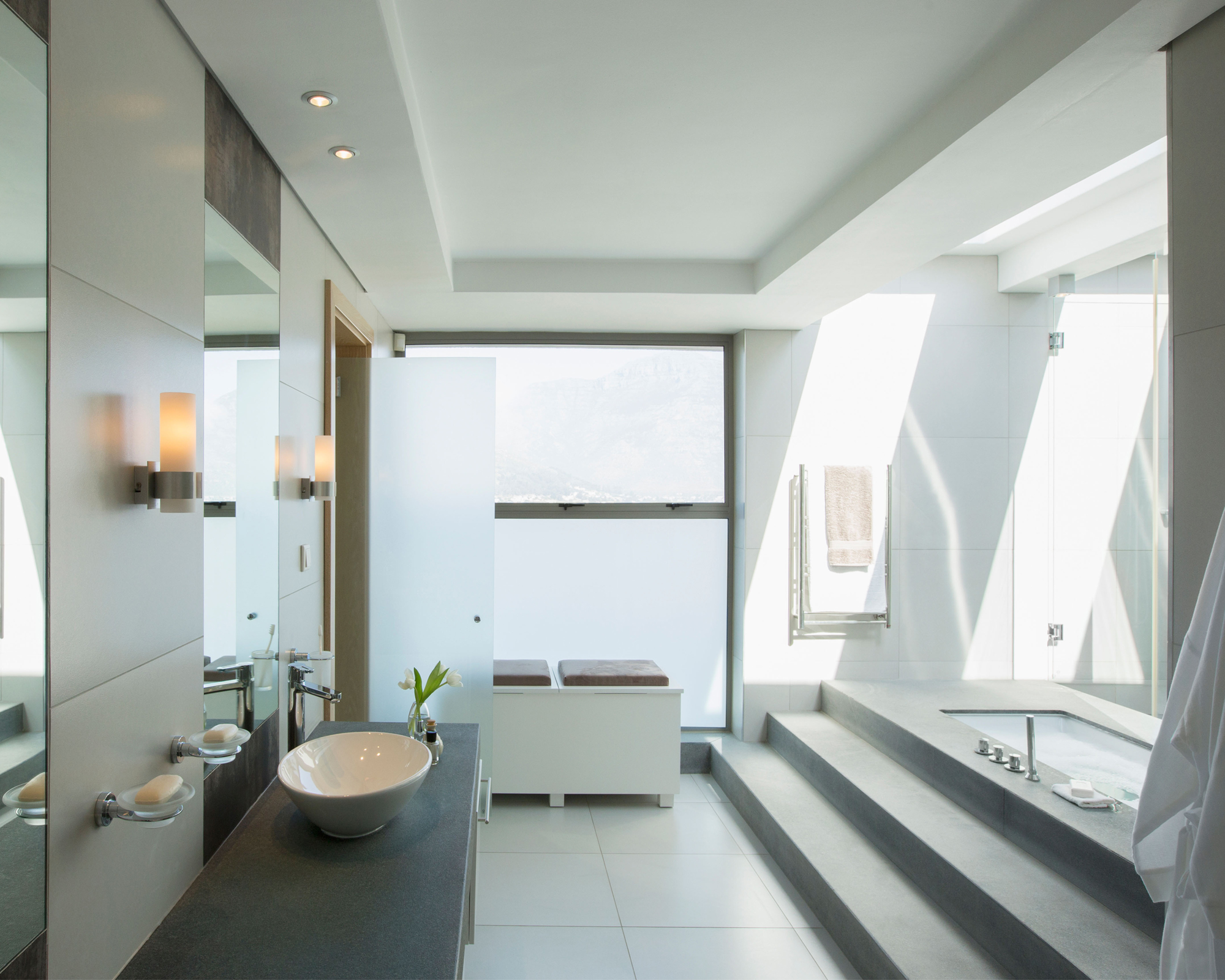Tray ceilings: Are they dated or desirable?
Tray ceilings are unique in design but are they too dated, and are they worth keeping? Here's everything you need to know.

Tray ceilings: a cool architectural update to your room, or an outdated feature you want to get rid of? A tray ceiling is one of those room features that many homeowners disagree on – and many have never really heard of. And yet, tray ceiling ideas can provide solutions to rooms that feel overly bland or too small.
As far as ceiling ideas go, tray ceilings are an underused feature that can breathe new life into a room – if incorporated correctly. Ultimately, only you can decide if a tray ceiling is right for your home – but consulting expert opinion will make your decision easier.

A kitchen with an inverted tray ceiling, designed by Hartman Homes Inc.
What is a tray ceiling?
Kate Diaz, an Interior designer and founder of Swanky Den, defines a tray ceiling as a 'coffered ceiling, featuring a series of rectangular panels (trays) recessed into the ceiling. The panels may be uniform in size and shape, or they may be different sizes and shapes to create an interesting pattern.'
Joshua Blackburn, the Director of Design and Construction of Evolving Home, describes a tray ceiling as 'an inverted ceiling', with 'a design that features a center section higher than the areas around the room, which has the appearance of an inverted tray.' The inverted tray ceiling is one type of tray ceiling, although it is somewhat less common than the more traditional recessed tray ceiling.
The main benefit of tray ceilings, according to Diaz, is that they 'can add architectural interest and visual depth to a room.' Although the standard, white ceiling is still the most popular ceiling design out there, tray ceilings are a popular design for smaller rooms, or for open-plan kitchen-diners that can benefit from additional architectural detiling. The rooms that most often have tray ceilings installed are bathrooms, bedrooms, kitchens, dining rooms, and living rooms.

Are tray ceilings outdated?
The answer, if you are considering a tray ceiling, is a reassuring 'no'. Tray ceilings are not outdated – you just need a little bit of design intuition to know whether they'll fit into the architectural profile of your room. Blackburn points out that the 'compact design' of a tray ceiling 'is a hit in contemporary homes as it adds a perceived sense of height and depth to a space. It makes a space look grander, which creates a luxurious feel.'
Tray ceilings are definitely worth trying out as part of modern living room ideas, or in a modern bathroom or kitchen. If you're used to seeing tray ceilings in outdated interior schemes, Andre Kazimierski, CEO of Improovy, recommends giving them the benefit of the doubt – 'like nearly any design choice, tray ceilings can look great if done correctly', he explains.
Get small space home decor ideas, celeb inspiration, DIY tips and more, straight to your inbox!
If you're thinking of installing a tray ceiling, be aware that this feature has a' distinctive' look, which means that it will 'put more emphasis on the ceiling itself.' This is a good thing in a small room, lovely to incorporate into small bathroom ideas, for instance. A tray ceiling in a very large room, on the other hand, may look out of place and bulky.

Are tray ceilings expensive?
Tray ceilings are slightly more expensive than traditional ceilings because of the additional material and labor involved. Blackburn advises that constructing a tray ceiling costs around $2-$4 per square foot to install, or around $500-$1,500 in a new home construction. Blackburn's top tips is that 'it is usually cheaper to construct tray ceilings in a new home than to have it installed in an existing ceiling.'

Tray ceiling ideas: what are the different types of tray ceilings?
There are two types of tray ceilings, according to Kate Diaz"
- Recessed tray ceiling 'has a slight depression in the center, making it look like a sunken ceiling'
- Inverted tray ceiling – it 'is curved inward, like an upside-down U'
As far as tray ceiling ideas go, if you're not sure which type to choose, go for a recessed ceiling, because, 'in general, recessed tray ceilings create a more subtle look.' If you're definitely ready for a more dramatic look, go for an inverted tray ceiling as it will provide the maximum visual interest.
Recessed ray ceilings provide an excellent opportunity to fit panel LED lighting along thei perimeter. LED lighting will both emphasize the ceiling even further and create beautiful diffused light in your room that is much softer than a traditional overhead spotlight or chandelier.
Tray ceilings also lend themselves very well to contrasting paint effects, with either the inside or the outline of the ceiling painted a different, deeper color. Gray and white combinations are especially popular. If you like a rustic look, you can also install wood paneling inside the ceiling tray – a lovely look for rustic bedroom ideas.
Anna is a professional writer with many years of experience. She has a passion for contemporary home decor and gardening. She covers a range of topics, from practical advice to interior and garden design.